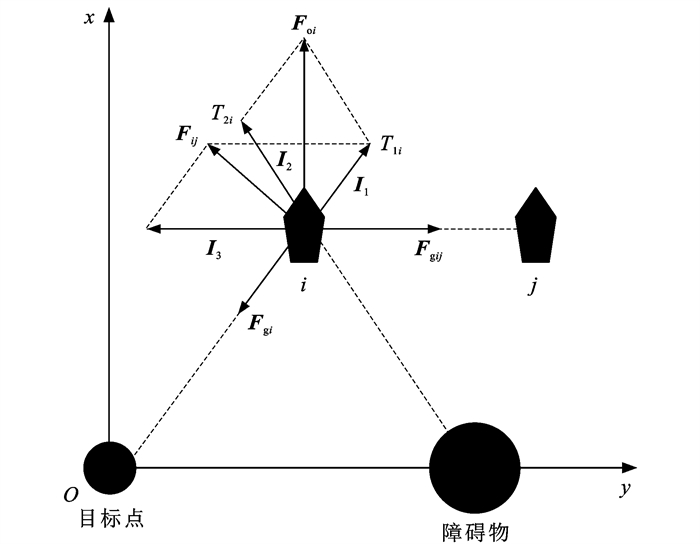| [1] |
PENG Zhou-hua, WANG Jun, WANG Dan, et al. An overview of recent advances in coordinated control of multiple autonomous surface vehicles[J]. IEEE Transactions on Industrial Informatics, 2021, 17(2): 732-745. doi: 10.1109/TII.2020.3004343
|
| [2] |
陆宇. 面向多船协同的自适应编队控制方法研究[D]. 上海: 上海交通大学, 2022.LU Yu. Adaptive formation control for the cooperation of autonomous surface vehicles[D]. Shanghai: Shanghai Jiao Tong University, 2022. (in Chinese)
|
| [3] |
柳晨光, 初秀民, 吴青, 等. USV发展现状及展望[J]. 中国造船, 2014, 55(4): 194-205. doi: 10.3969/j.issn.1000-4882.2014.04.024LIU Chen-guang, CHU Xiu-min, WU Qing, et al. A review and prospect of USV research[J]. Shipbuilding of China, 2014, 55(4): 194-205. (in Chinese) doi: 10.3969/j.issn.1000-4882.2014.04.024
|
| [4] |
侯瑞超, 唐智诚, 王博, 等. 水面无人艇智能化技术的发展现状和趋势[J]. 中国造船, 2020, 61(增1): 211-220.HOU Rui-chao, TANG Zhi-cheng, WANG Bo, et al. Development status and trend of intelligent technology for unmanned surface vehicles[J]. Shipbuilding of China, 2020, 61(S1): 211-220. (in Chinese)
|
| [5] |
柳晨光, 贺治卜, 初秀民, 等. 船舶编队控制综述[J]. 交通运输工程学报, 2022, 22(4): 10-27. doi: 10.19818/j.cnki.1671-1637.2022.04.002LIU Chen-guang, HE Zhi-bo, CHU Xiu-min, et al. Overview on ship formation control[J]. Journal of Traffic and Transportation Engineering, 2022, 22(4): 10-27. (in Chinese) doi: 10.19818/j.cnki.1671-1637.2022.04.002
|
| [6] |
TUO Yu-long, WANG Sha-sha, PENG Zhou-hua, et al. Reliability-based fixed-time nonsingular terminal sliding mode control for dynamic positioning of turret-moored vessels with uncertainties and unknown disturbances[J]. Ocean Engineering, 2022, 248: 110748. doi: 10.1016/j.oceaneng.2022.110748
|
| [7] |
LIANG Xiao, QU Xing-ru, WANG Ning, et al. A novel distributed and self-organized swarm control framework for underactuated unmanned marine vehicles[J]. IEEE Access, 2019, 7: 112703-112712. doi: 10.1109/ACCESS.2019.2934190
|
| [8] |
LU Yu, ZHANG Guo-qing, SUN Zhi-jian, et al. Adaptive cooperative formation control of autonomous surface vessels with uncertain dynamics and external disturbances[J]. Ocean Engineering, 2018, 167: 36-44. doi: 10.1016/j.oceaneng.2018.08.020
|
| [9] |
马雨飞. 基于确定学习方法的无人水面艇编队控制与学习研究[D]. 广州: 华南理工大学, 2020.MA Yu-fei. Formation control and learning of multiple unmanned surface vehicles based on deterministic learning method[D]. Guangzhou: South China University of Technology, 2020. (in Chinese)
|
| [10] |
FU Ming-yu, JIAO Jian-fang, YIN Shen. Robust coordinated formation for multiple surface vessels based on backstepping sliding mode control[J]. Abstract and Applied Analysis, 2013, 2013: 681319.
|
| [11] |
SUN Dong, WANG Can, SHANG Wen, et al. A synchronization approach to trajectory tracking of multiple mobile robots while maintaining time-varying formations[J]. IEEE Transactions on Robotics, 2009, 25(5): 1074-1086. doi: 10.1109/TRO.2009.2027384
|
| [12] |
LI Le-bao, SUN Ling-ling, ZHANG Sheng-zhou. Mean deviation coupling synchronous control for multiple motors via second-order adaptive sliding mode control[J]. ISA Transactions, 2016, 62: 222-235. doi: 10.1016/j.isatra.2016.01.015
|
| [13] |
杨立炜, 付丽霞, 李萍. 多智能体系统编队控制发展综述[J]. 电子测量技术, 2020, 43(24): 18-27.YANG Li-wei, FU Li-xia, LI Ping. Summary of development of multi-agent system formation control[J]. Electronic Measurement Technology, 2020, 43(24): 18-27. (in Chinese)
|
| [14] |
ZHANG Ying, LI Xu. Leader-follower formation control and obstacle avoidance of multi-robot based on artificial potential field[C]//IEEE. The 27th Chinese Control and Decision Conference (2015 CCDC). New York: IEEE, 2015: 4355-4360.
|
| [15] |
DING Guo-hua, ZHU Da-qi, SUN Bing. Formation control and obstacle avoidance of multi-AUV for 3-D underwater environment[C]//IEEE. Proceedings of the 33rd Chinese Control Conference. New York: IEEE, 2014: 8347-8352.
|
| [16] |
ZHOU Ding-jiang, WANG Zi-jian, SCHWAGER M. Agile coordination and assistive collision avoidance for quadrotor swarms using virtual structures[J]. IEEE Transactions on Robotics, 2018, 34(4): 916-923. doi: 10.1109/TRO.2018.2857477
|
| [17] |
CHEN Xuan-lin, HUANG Fang-hao, ZHANG You-gong, et al. A novel virtual-structure formation control design for mobile robots with obstacle avoidance[J]. Applied Sciences, 2020, 10(17): 5807. doi: 10.3390/app10175807
|
| [18] |
LIN Jin-ling, HWANG K S, WANG Ya-ling. A simple scheme for formation control based on weighted behavior learning[J]. IEEE Transactions on Neural Networks and Learning Systems, 2014, 25(6): 1033-1044. doi: 10.1109/TNNLS.2013.2285123
|
| [19] |
徐肖豪, 李成功, 赵嶷飞, 等. 基于人工势场算法的改航路径规划[J]. 交通运输工程学报, 2009, 9(6): 64-68. doi: 10.19818/j.cnki.1671-1637.2009.06.013XU Xiao-hao, LI Cheng-gong, ZHAO Yi-fei, et al. Rerouting path planning based on artificial potential field algorithm[J]. Journal of Traffic and Transportation Engineering, 2009, 9(6): 64-68. (in Chinese) doi: 10.19818/j.cnki.1671-1637.2009.06.013
|
| [20] |
KHATIB O. Real-time obstacle avoidance system for manipulators and mobile robots[C]//IEEE. Proceedings of 1985 IEEE International Conference on Robotics and Automation. New York: IEEE, 2003: 500-505.
|
| [21] |
郭银景, 刘琦, 鲍建康, 等. 基于人工势场法的AUV避障算法研究综述[J]. 计算机工程与应用, 2020, 56(4): 16-23.GUO Yin-jing, LIU Qi, BAO Jian-kang, et al. Overview of AUV obstacle avoidance algorithm based on artificial potential field method[J]. Journal of Computer Engineering and Applications, 2020, 56(4): 16-23. (in Chinese)
|
| [22] |
刘琨, 张永辉, 任佳. 基于改进人工势场法的无人船路径规划算法[J]. 海南大学学报(自然科学版), 2016, 34(2): 99-104.LIU Kun, ZHANG Yong-hui, REN Jia. Path planning algorithm for unmanned surface vehicle based on an improved artificial potential field method[J]. Natural Science Journal of Hainan University, 2016, 34(2): 99-104. (in Chinese)
|
| [23] |
LAZAROWSKA A. A new potential field inspired path planning algorithm for ships[C]//IEEE. 2018 23rd International Conference on Methods and Models in Automation and Robotics (MMAR). New York: IEEE, 2018: 166-170.
|
| [24] |
LYU Hong-guang, YIN Yong. Ship's trajectory planning for collision avoidance at sea based on modified artificial potential field[C]//IEEE. 2017 2nd International Conference on Robotics and Automation Engineering (ICRAE). New York: IEEE, 2018: 351-357.
|
| [25] |
迟岑. 基于机器学习的无人艇自主避碰方法研究[D]. 哈尔滨: 哈尔滨工程大学, 2016.CHI Cen. Research on autonomous collision avoidance method of USV based on machine learning method[D]. Harbin: Harbin Engineering University, 2016. (in Chinese)
|
| [26] |
WANG Jia, WU Xiao-bei, XU Zhi-liang. Decentralized formation control and obstacles avoidance based on potential field method[C]//IEEE. 2006 International Conference on Machine Learning and Cybernetics. New York: IEEE, 2009: 803-808.
|
| [27] |
WANG Yi-fan, SUN Xing-yan. Formation control of multi-UAV with collision avoidance using artificial potential field[C]// IEEE. 2019 11th International Conference on Intelligent Human-Machine Systems and Cybernetics (IHMSC). New York: IEEE, 2019: 296-300.
|
| [28] |
徐玉杰. 多动力定位船避碰控制方法研究[D]. 哈尔滨: 哈尔滨工程大学, 2018.XU Yu-jie. Research on collision avoidance control methods for multiple dynamic positioning ships[D]. Harbin: Harbin Engineering University, 2018. (in Chinese)
|
| [29] |
王永军, 郑丽. 关于Young不等式和Schwarz不等式的证明[J]. 数学学习与研究, 2020(26): 145-147.WANG Yong-jun, ZHENG Li. Proof of the Young inequality and the Schwarz inequality[J]. Mathematics Learning and Research, 2020(26): 145-147. (in Chinese)
|





 下载:
下载:











